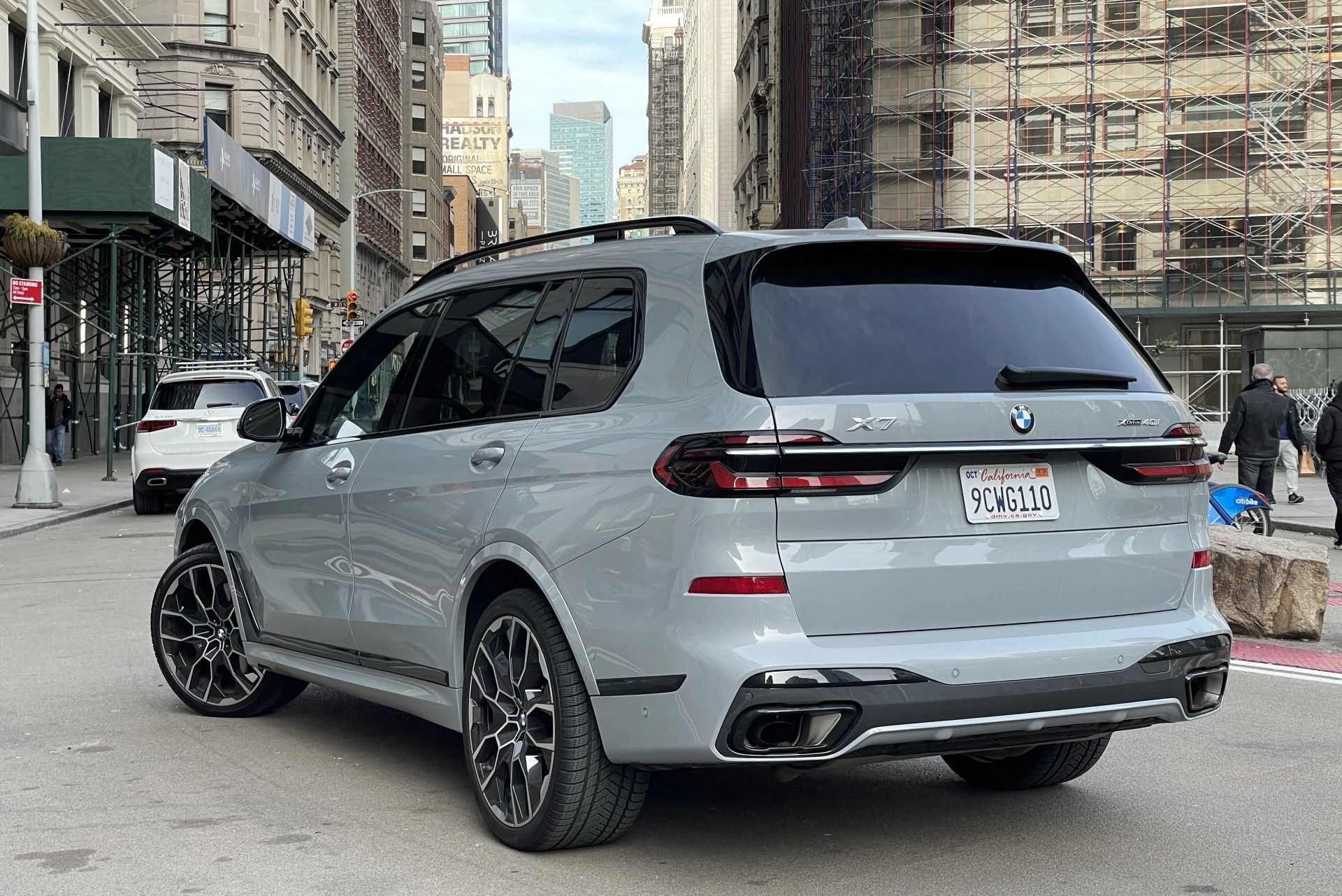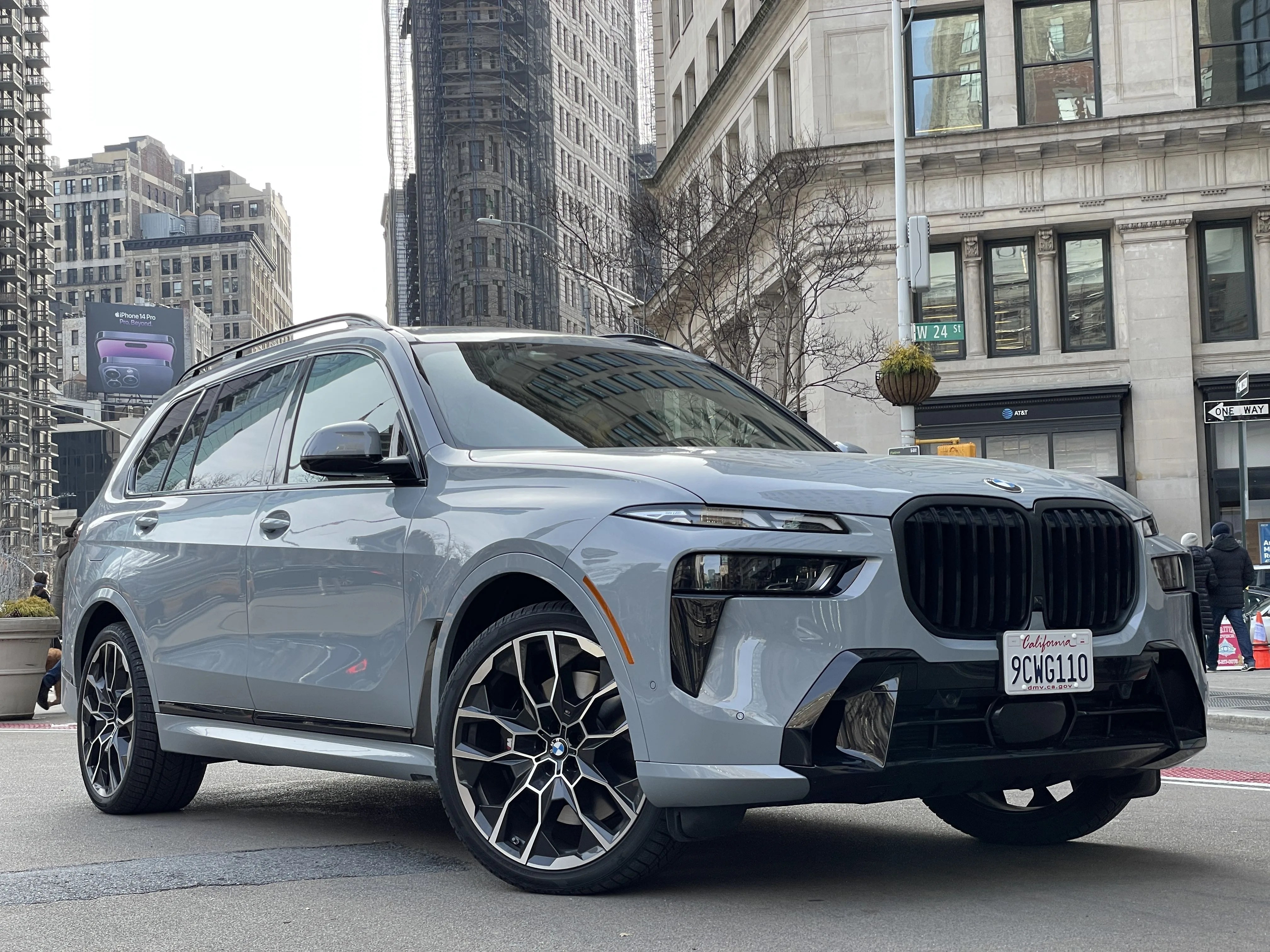It wasn’t all that long ago that the idea of BMW building a giant, eight-passenger SUV would have seemed downright heretical. Sedans, coupes, wagons and convertibles have been Bimmer’s stock in trade most of its existence; it waited until the very end of the 20th century to jump on the sport-utility bandwagon, even though manufacturers had been using the term for the fast-growing category for more than a decade and models like the Ford Explorer, Chevy Tahoe and Jeep Grand Cherokee had proven the immense demand for family cars that combined four-wheel-drive grip and a civilized ride.
Of course, to paraphrase Mr. Zimmerman, the times have been a-changing. Here in 2023, the X7 isn’t even the most controversial model BMW builds on this platform; that honor would have to go to the plus-sized plug-in-hybrid performance SUV called the BMW XM, the M division’s first unique car since the M1. But the X7 has been around long enough (and sold enough copies) to earn a mid-life-cycle refresh, clearly demonstrating that, while true Bimmer believers may still cry fowl, the market says otherwise.
So with the X7 freshly updated for the 2023 model year, I took it for a spin in and around the greater New York area to see how it would handle the urban and suburban chores that the vast majority of these big BMWs will spend their lives performing. Here’s what I found.
2023 BMW X7: What We Think
The X7 is one of the best choices in the large luxury SUV category, especially if that third row of seats will be used more occasionally than regularly. Its car-like (at least for a large SUV) performance, ride and handling make it easy, even fun to drive for such a big beast. While 2023’s updates are on the milder side, and the facelift’s visual appeal is very much a matter of taste, the interior upgrades have overall made it an even more comfortable and enjoyable place to occupy while driving.
The 2023 BMW X7: Testing Notes
The X7 is big, but not overwhelmingly so
 Will Sabel Courtney
Will Sabel CourtneyTechnically, the X7 competes in the same three-row SUV category as the Lexus LX 600, Cadillac Escalade, Infiniti QX80, Jeep Grand Wagoneer and Lincoln Navigator, but it doesn’t quite feel on the same scale. Part of that is due to its car-like unibody construction, versus the pickup truck-based body-on-frame build of those other vehicles; it lends the X7 (and the Mercedes-Benz GLS-Class, which also goes unibody) a bit more of a nimble feeling. But it’s also because, well, it is smaller. At 203.6 inches long, it’s nearly a foot shorter than an Escalade — even though the Bimmer’s wheelbase is two inches longer.
Granted, that makes the third row less usable than the equivalent of larger SUVs; it’s fine for occasional use, such as the ever-cliché duty of being pressed into transporting a couple extra tweens to soccer practice, but the toll it takes from the cargo bay means you won’t be able to carry many balls or bags back there. (And on the flip side — if you really use your third row often, odds are good you’re looking at an extended-length SUV from one of Detroit’s automakers, anyway.)





